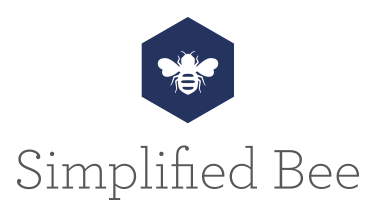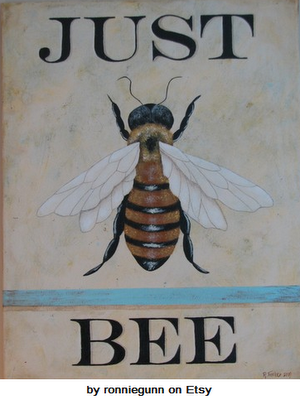It should come as no surprise – I’m a bee lover. I love their beautifully organized beehive homes, team focus and sweet honey creations. I even love honey bee art. So of course, I was very troubled to learned a few years ago that bee populations were declining.
Recently, I read a hopeful article in Sunset Magazine (August 2009) called Hive Minds promoting a grassroot effort aimed at learning more about this problem and finding solutions to restore the numbers of pollinators. Founded in 2008 by San Francisco State University associate of biology professor, Gretchen LeBuhn, The Great Sunflower Project distributes free ‘Lemon Queen’ sunflower seeds for people to plant in their yards. After the sunflowers have bloomed, participants are asked to track and report any bee activity. LeBuhn says, “Sunflowers are easy to grow and wildly attractive to bees.”
Why is this important to us all? LeBuhn says it best and puts the problem into perspective –
“Economists and ecologists have started working together to find a way to place a financial value the contribution of natural ecosystems to human existence. The estimates are eye-opening. For example, the value of pollination services from wild pollinators in the U.S. alone is estimated at four to six billion dollars per year. While these ecosystem services are currently produced for “free”, replacing the natural ecosystem would cost many trillions of dollars. Unless human activities are carefully planned and managed, valuable ecosystems will continue to be impaired or destroyed.”
The project has been wildly successful and now has approximately 55,000 participants. The data these volunteers collect will provide valuable insight on determining the root of the problem and how to help reverse it. To “hunt for bees” and join this worthwhile project, visit The Great Sunflower Project.
Also, if you are interested in making your yard more bee-friendly, here are three easy ways from Sunset Magazine –
1. Plant diverse bee-friendly flowers and edibles like asters, lavender, strawberries and of course sunflowers.
2. Avoid using too much mulch or pesticides – it discourages native ground-nesting bees and approximately 70 of native bees are ground nesters.
3. Don’t pick those weeds! Weeds such as dandelions and clover provide quality pollen and nectar. Simply pull them after their blossoms are spent. This last one is tough for me! Guess I shouldn’t worry too much about the the clover that has popped up in my yard.
Or you can do what Martha Stewart does and have your own beehives. In June of this year, she blogged about having nearly 12,000 honeybees and one queen delivered to her farm. The incredible photo above is of her lovely queen bee – the large bee with the blue dot. She hired Guy Hodges of Bee Guy Apiaries LLC in South Salem, New York to handle the buzzing project.
Now let’s go help save our favorite pollinating friends. Buzz, buzz, buzz…





 Follow
Follow
3 Responses to Save the Bees – The Great Sunflower Project